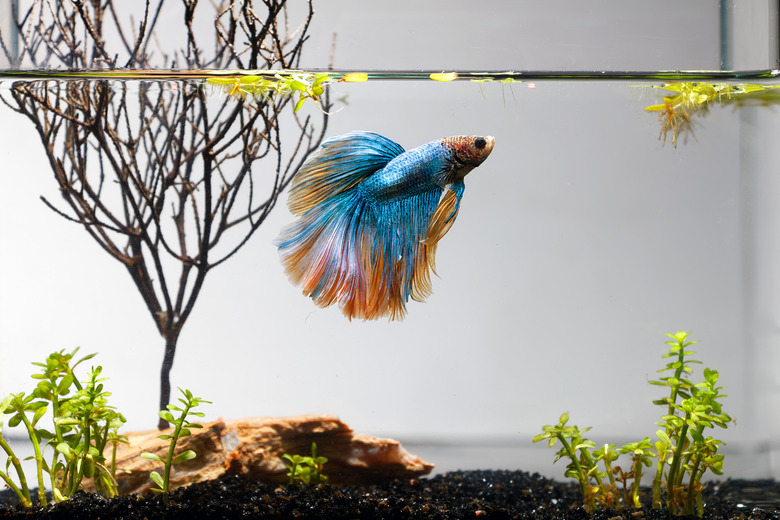What Is The Film At The Top Of The Betta Fish Tank?
Watching your beautiful betta flow around his aquarium can be a dreamy way to while away a little time. But when an unsightly film at the top of the fish tank appears, it could signal it's time to get busy and make a few changes to the tank.
Notice the oily scum
Notice the oily scum
If the betta fish water is cloudy, you could have a protein film floating on the top of your tank. Although the betta fish film on the water surface itself is not technically harmful, the fact that it makes a barrier between the air and the water can result in conditions that make your fish sick.
Film at the top of the fish tank blocks the exchange of oxygen and carbon dioxide along the surface of the water, according to FishLab. Even a small spot of oily film results in a reduction of how much oxygen and carbon dioxide are exchanged, making it harder for your betta fish to get the oxygen he needs.
Betta fish water cloudy?
Betta fish water cloudy?
Getting rid of film at the top of the fish tank is more easily accomplished once you know the reasons for the oily slick. Often, the color and nature of the betta fish film on the water surface can clue you into its origin.
Oil from your hands
Oil from your hands
Sticking your hands in the tank is one of the most common causes of a film at the top of the fish tank, according to FishLab. Rearranging your pet's tank decorations or trying to capture him with a net during a tank change can cause natural oils from your skin to transfer into the water.
Betta fish are some of the easiest fish to train to do tricks and eat out of your hand according to Aqueon. Teaching your fish to take food from your fingers or let you pet him under the water will also rinse your skin oil into the water.
Hand lotion, soaps, and anything else that might be clinging to your fingertips will also go into your pet's tank and wind up floating on the surface. Wash your hands thoroughly before putting them in the water. Just be sure to rinse well to remove all traces of soap. Heavy-duty aquarium gloves that you do not use with any cleaning products except those you use in your aquarium can also prevent skin oil transfer when cleaning your pet's aquatic environment.
Proteins and oils from food
Proteins and oils from food
Bettas are carnivores and require large amounts of protein in their diet according to Bettafish.org. In the wild, their diet consists primarily of insects, which provide their dietary requirements without fiber-rich filler.
Replicate your betta's ideal diet by serving up fresh, frozen, or dried foods such as bloodworms, shrimp, daphnia, and tubifex worms in addition to specially formulated betta fish pellets. Just make sure to not serve your fish any more than he'll eat in five minutes.
Any food leftover in the tank will start to break down in the water, releasing fats and proteins that can make betta fish water cloudy. The oils rise to the surface, creating an oxygen-blocking oil slick along the surface. Dead fish or other tank inhabitants and decaying plants could also be the source of a protein film.
Remove betta fish film
Remove betta fish film
There are easy ways to immediately remove the betta fish film on the water surface and prevent it from happening again in the future.
- Lay paper towels along the water's surface and gently remove them. The oil will cling to the paper towel.
- Use a measuring cup with a pointed spout to skim the grease from the surface of the tank
- Install an air stone or other aquarium equipment that will keep the surface of the water agitated and prevent a film from forming by breaking up collected oils and proteins.
- Use a surface skimmer that attaches to your filter. This will suck up any oily film at the surface as your tank water circulates and prevent them from going back into the water.
